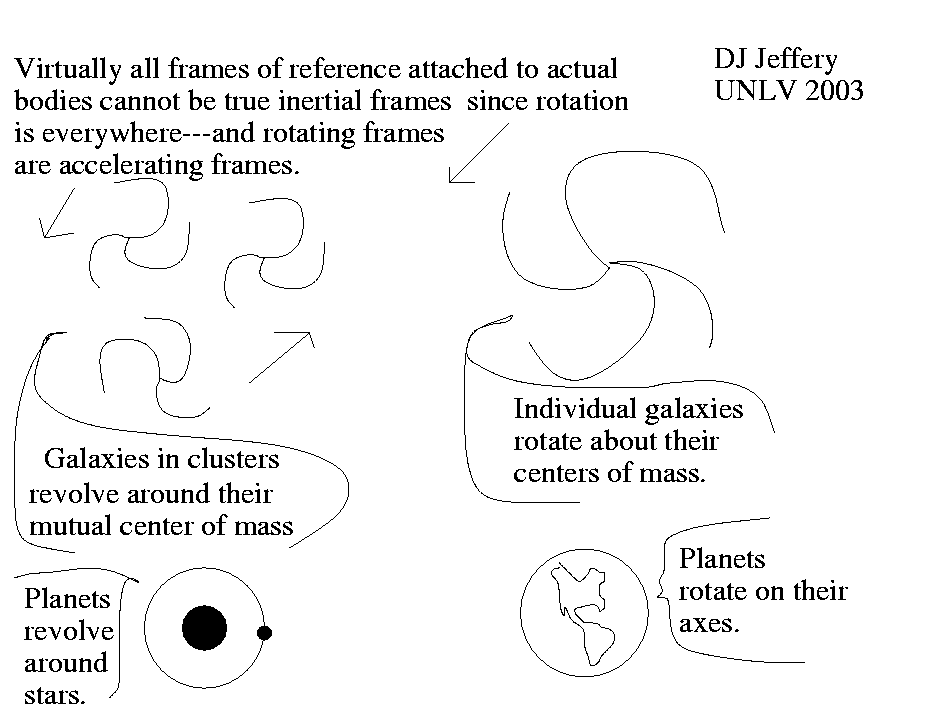
This figure and analysis are off the mark. Somewhat erroneous.
Caption: Most astronomical objects in the observable universe are in an overall sense rotating frames, and so are non-inertial frames in an overall sense.
But, all importantly, parts of the astronomical objects that are in free fall in a uniform external gravitational field are local inertial frames (AKA local free-fall frames). This follows from the strong equivalence principle of general relativity.
In fact, such inertial frames are ideal limits (since external gravitational fields are never exactly uniform) that are approached more or less closely by actual free-fall reference frames.
The centers of mass (CMs) of the astronomical objects in free fall are the natural origins for the inertial frames of the astronomical objects.
There are many cases where the free-fall reference frames are sufficiently inertial for almost all purposes and many cases where they are NOT.
We consider the astronomical objects shown in the figure:
- Lower right: Earth's surface
is sufficiently an inertial frame for many purposes,
but the Earth rotates
on its axis,
and so is NOT exactly
inertial.
It is a rotating frame
relative to the
more inertial
center of mass
inertial frame
of the Earth.
The center of mass free-fall frame of the Earth is a inertial frame though only approaches being exactly so one approaches the center of mass itself.
Cases for which the Earth's surface is NOT sufficiently inertial to be approximated as an inertial frame are long-range artillery and meteorology.
For these, you need to consider non-inertial frame effects. The Non-inertial frame effects can be treated via inertial forces.
- Lower left:
A reference frame moving
with a planet
center of mass
is only an inertial frame
sufficiently close to the
planet
to be in the sufficiently
uniform gravitational field
supplied by the parent star.
If you are too far from the planet, you should use the center of mass inertial frame of the parent star which is usually virtually the same as that of the nearby stars.
In the case of the Solar System, the nearby stars are called the fixed stars.
-
The fixed stars
are NOT really fixed: "fixed stars"
is a historical term to distinguish relatively unmoving
nearby stars
from the moving planets.
Isaac Newton (1643--1727) postutlated the fixed stars were on average at rest in a fundamental inertial frame that he called absolute space. We've had to drop that postulate since his day.
The orbital period of the Sun about the Milky Way center (AKA Galactic center) is ∼ 225--250 Myr (see Wikipedia: Sun).
- Upper right: Galaxies
are in differential rotation,
and so are NOT
inertial frames overall.
However, sufficiently small regions in a galaxy can be considered inertial frames since they are in free fall in approximately uniform external gravitational fields due to the rest of the galaxy.
- Upper left: Galaxies
themselves are often in galaxy clusters
and orbit the
centers of mass of
galaxy clusters
in complex evolving orbits.
The center of mass free-fall framegalaxy cluster